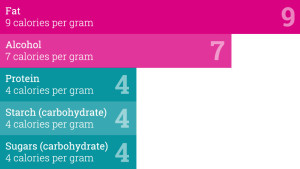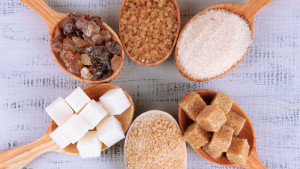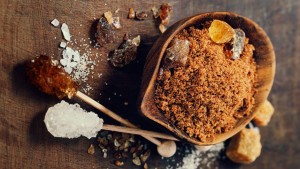FOOD LABELLING
Whilst it is mandatory for an ingredients label to be displayed on pre-packaged foods and drinks – as laid out in the Food & Drugs Act by the Republic of Zambia (71) other labels may be included to help you understand, for example, the nutrient and calorie count of the products you are buying.
In the next couple of years, you may also start to see a ‘Good Food’ logo on pack. This is an initiative by the SUN Business Network (SBN) and the Government of Zambia and is designed to help consumers identify more nutritious food options in stores (72).
Further information on food and nutrition can be found at www.nfnc.org.zm
For further information on the Good Food initiative, please visit www.scalingupnutrition.org/sun-countries/zambia/
When it comes to sugars, below you’ll find some useful information about where you can find out just how much are in a product.
Ingredients list
You’ll find the ingredients label on the front or back of pack. Here all the ingredients that have been used to make the product will be shown in descending order of weight, according to the proportion of ingoing weight (m/m) at the time of the manufacture of the food.
If you see ‘sugar’ listed, then it is the same type of sugar that you find in your home (sucrose). There may also be other ingredients that contain sugars such as fruit, fruit juice or other sugar ingredients e.g. dextrose or glucose.
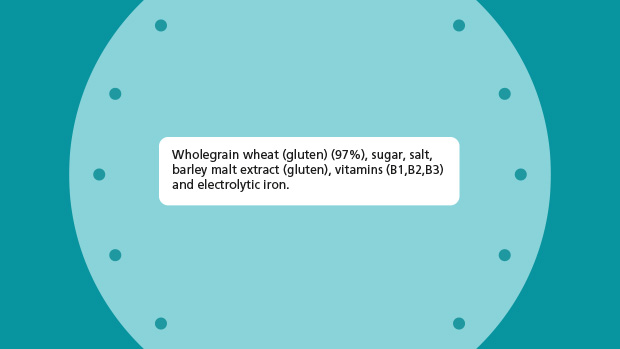
Nutritional information Panel
The second place you will be able to find out about sugars is on the nutritional information panel. Although the nutritional label is not a mandatory requirement, many products display it to help you understand the nutrient and calorie count.
This label can be found typically on the back or side of pack and will list the major nutrients in a product, including energy (in kilocalories (kcal), known as calories), and the amounts of fat, carbohydrates, sugars, protein and salt. Some products also show the nutrient content in terms of per portion as a percentage of the Daily Value.
Sugars will be listed as carbohydrates (which usually include both starches and sugars) and will use the phrase “of which total sugars” to show how much sugars there are per 100g/100ml of product.

Front of pack labelling
On some products you may also see a nutritional label on front of pack. This is currently voluntary but when it is displayed, it can provide a useful ‘at a glance’ summary of the nutritional values of the product.
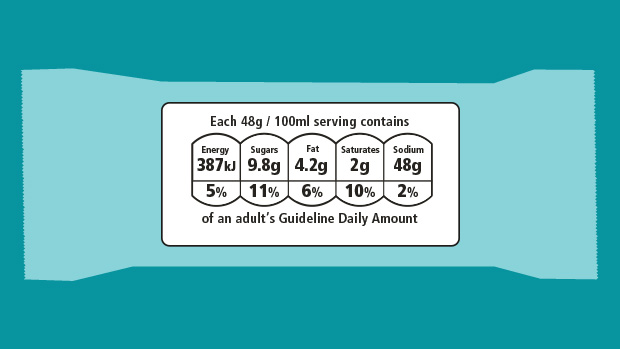
Traffic light labelling
Whilst you won’t find traffic light labelling on pre-packaged food and drink products produced in Zambia today, you may see it on pre-packaged products which have been imported into the country. This label will have a traffic light colour overlaid on top of the nutritional information to indicate at a glance whether the food or drink contains a high (red), medium (amber) or low (green) amount of fat, saturates, sugars and salt.
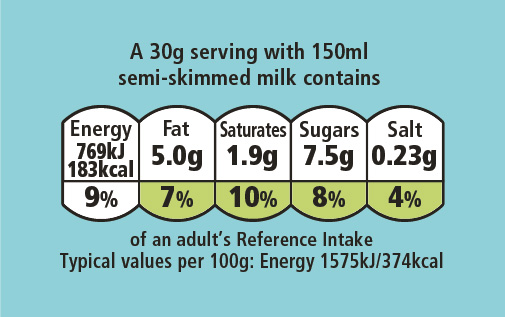
Identifying ‘added sugars’
We often get asked as well about identifying ‘added sugars’ (ie. sugars that have been added during food and drink manufacturing). It is not possible to distinguish naturally occurring sugars from added sugars in a laboratory given they are the same molecule. However, some countries are exploring how ‘added sugars’ could be calculated and shown on labels. For example, the US has started to introduce ‘added sugars’ on the labels of pre-packaged food and drink products, and the US Food & Drug Administration (FDA) is continuing to work with manufacturers to meet these new labelling requirements. ‘Added sugars’ are calculated based on product manufacturers’ proprietary recipes as a baseline.
| SUGAR FACTS |
|---|
| There is no such thing as 'hidden sugar'. It must always be declared on the food label. |
| Added sugars (also known as free sugars) are those used in manufacturing or added by the cook or consumer. Naturally occurring sugars are those found naturally in a product e.g. fruit or vegetables |

